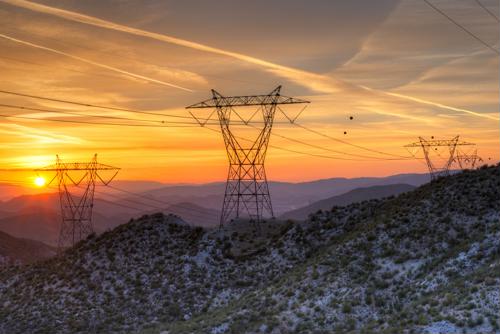
Enabling More Efficient Utility Performance with the IIoT
By Max BurkhalterJanuary 10, 2022
There are as many uses for industrial internet of things (IIoT) technologies as there are types of companies. This is because the concept behind the IIoT — adding smart, digital features to all kinds of equipment — is so universally useful.
In the utilities sector, the rich data coming from IIoT assets can prove especially useful as providers attempt to modernize and strengthen their grids. In some corners of the utility world, such as electricity and water, aging infrastructure is a problem. In others, such as fiber, managing ever-expanding new grids is the primary challenge. In either case, the added intelligence that comes with IIoT is a major potential boost.
What does this mean for organizations in the field? In the very near future, a wide cross-section of utilities will likely add significantly more IIoT features than they've harnessed in the past.
Where Can IIoT Have a Positive Impact on Utilities?
There are plenty of places in utility grids where an IIoT sensor can add real value. For instance, Deloitte pointed out the useful prospect of measuring data at unmanned locations using automated sensor equipment.
When key pieces of equipment are equipped with their own onboard IIoT tech tools, they become capable of transmitting data back to monitoring centers. This saves time and effort by inspection teams, providing detailed impressions of any problems afflicting unstaffed substations, pumping stations or other facilities.
Deloitte noted that beyond the immediate use of IIoT solutions for monitoring, there are further-reaching implications for sensors and data analysis in the utility sector. For example, the virtual power plant model could soon come to prominence.
Under the virtual system, a series of generation stations, such as solar cells or windmills, is networked together and controlled by one digital system. The central unit takes power as it's needed and distributes it to meet the needs of the grid in real time. This level of precise digital control requires powerful sensors, courtesy of the IIoT.
How Quickly Are Utilities Adding IIoT Equipment?
As recent research from Inmarsat points out, utilities have accelerated their IIoT plans while operating under the challenging conditions brought on by the global pandemic. Nearly half of electrical utilities, 48%, have sped up their use of intelligent technologies, citing COVID-19 as the reason why.
One of the primary IIoT device types used in the electrical sector is the smart meter. This is a power meter capable of collecting and transmitting in-depth data. Companies using advanced metering infrastructure (AMI) are able to power their backend systems with valuable real-time data. In the event that something goes wrong with the flow of power to customers, the data from AMI can give utilities a head start on solving the problem.
As for the challenges associated with quickly scaling up IIoT investments, the Inmarsat research cited a need for skills, especially security expertise. Organizations must also commit to improving their connectivity. Dealing with an influx of new real-time data calls for strong, reliable infrastructure.
What Kind of Backend Connectivity Equipment Do Companies Need?
Bringing the IIoT to the utilities sector calls for a refreshed lineup of networking equipment. Perle can provide the gear required to keep data volumes from becoming overwhelming. This includes console servers tough enough for remote deployment and media converters able to stand up to temperature stress. Read energy sector success stories to learn more about these solutions and more.



